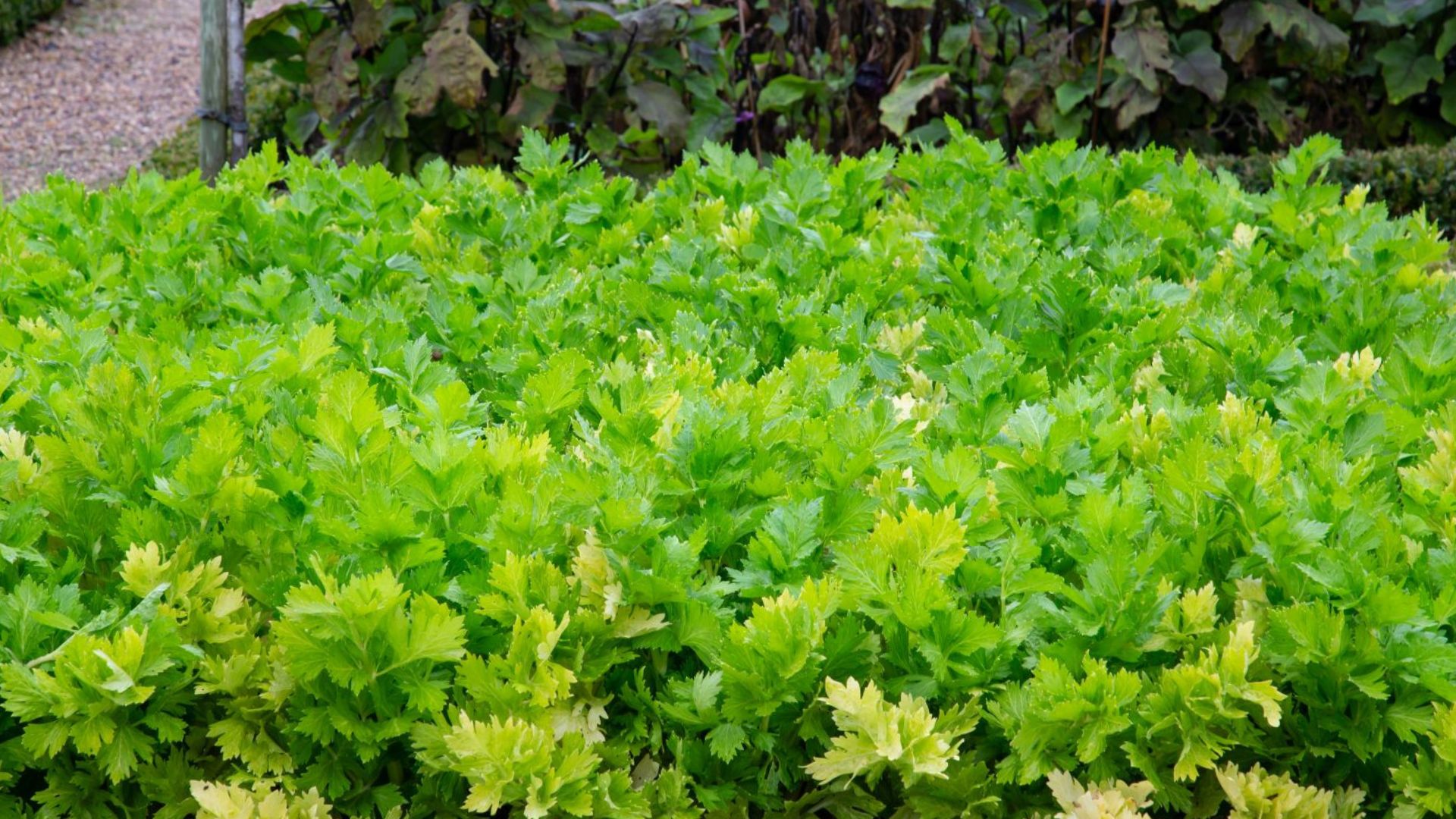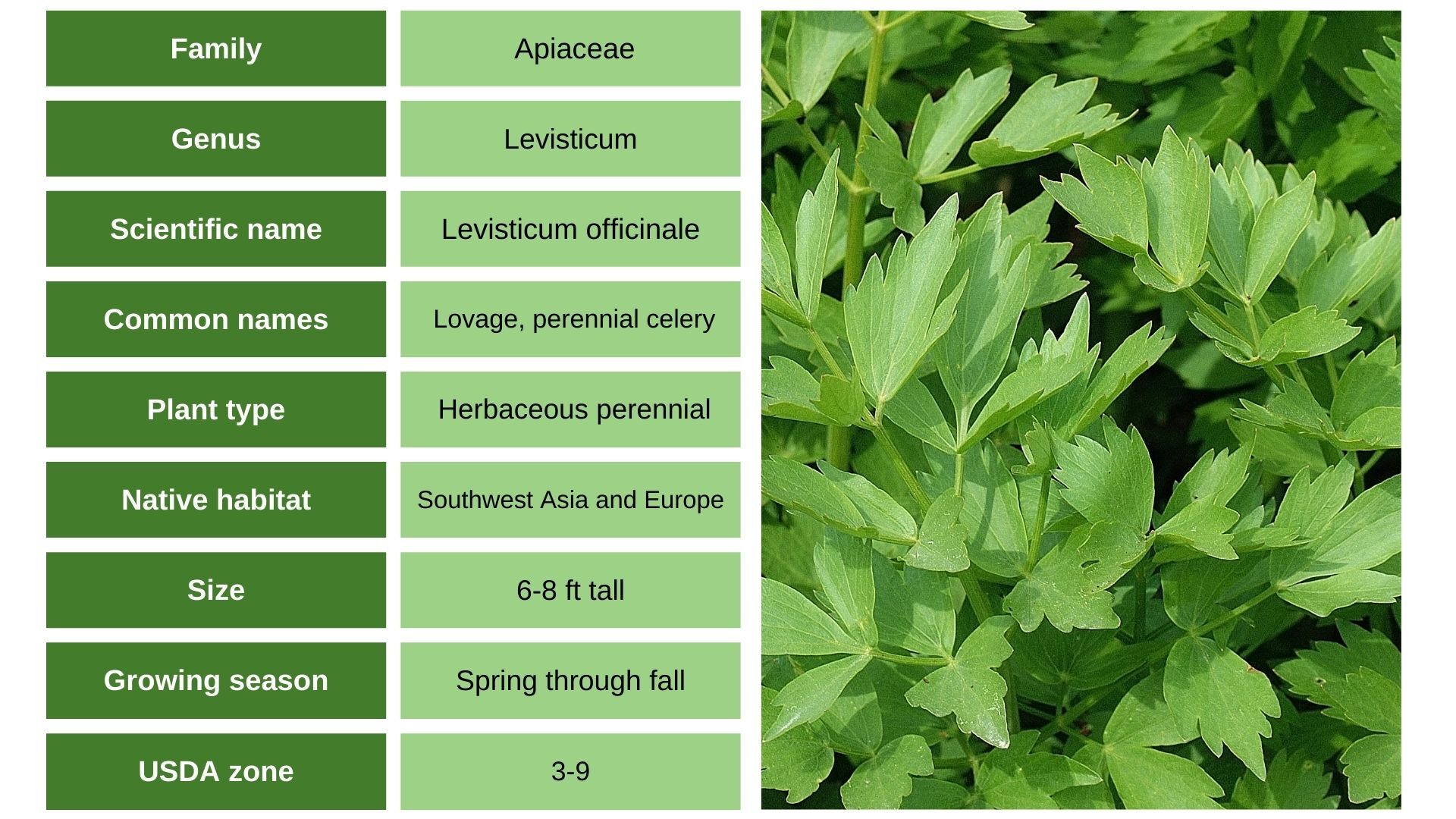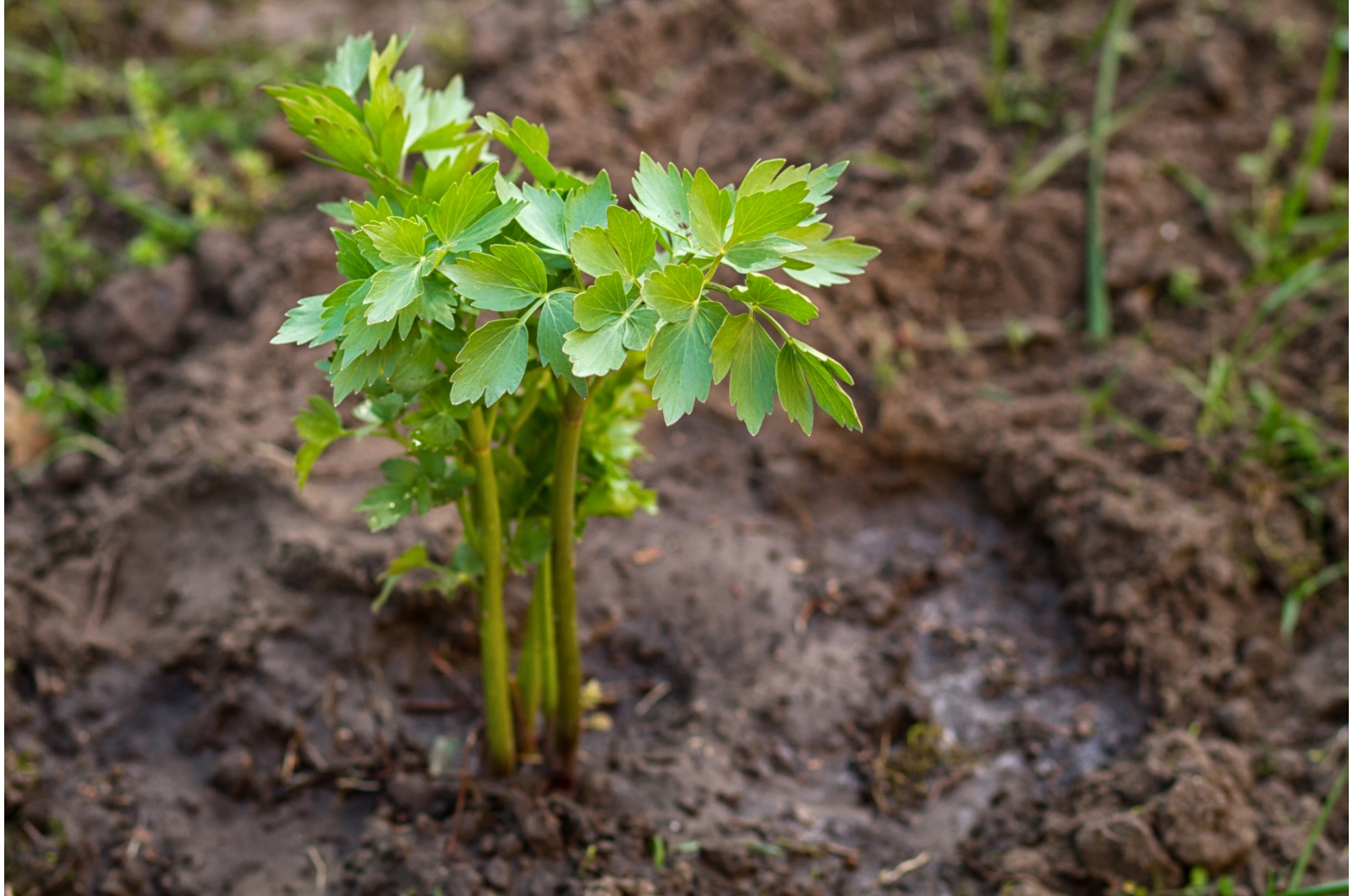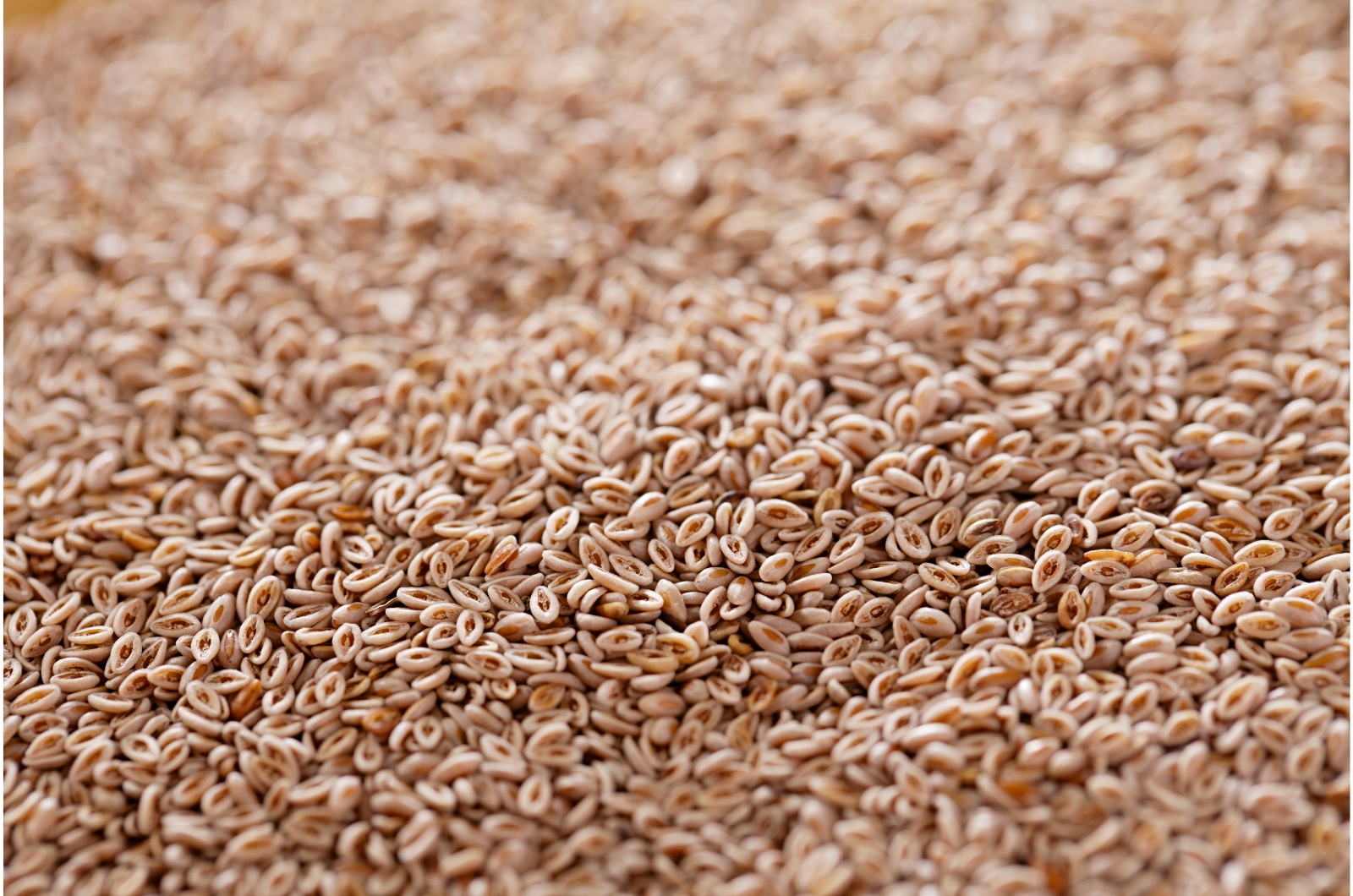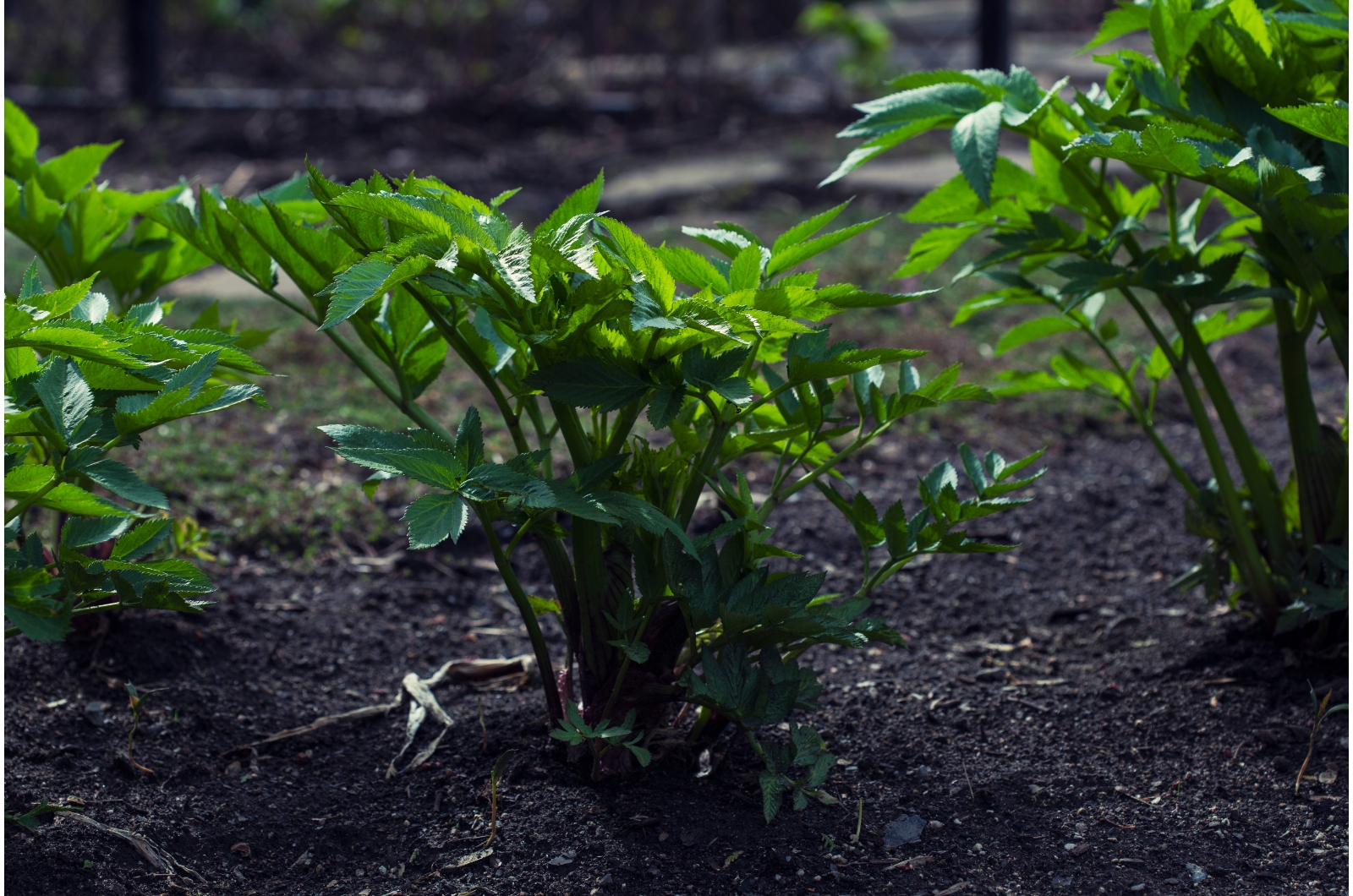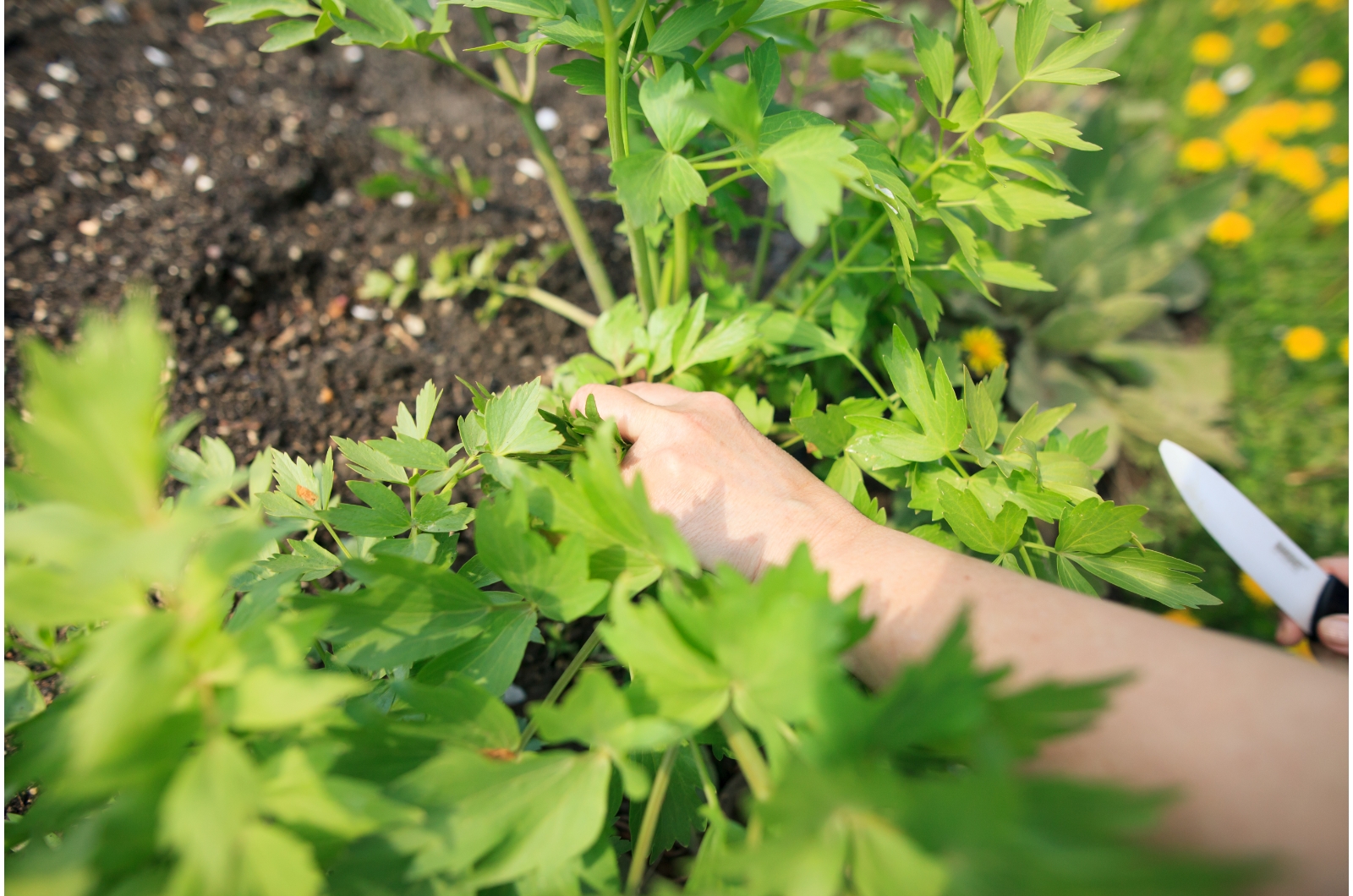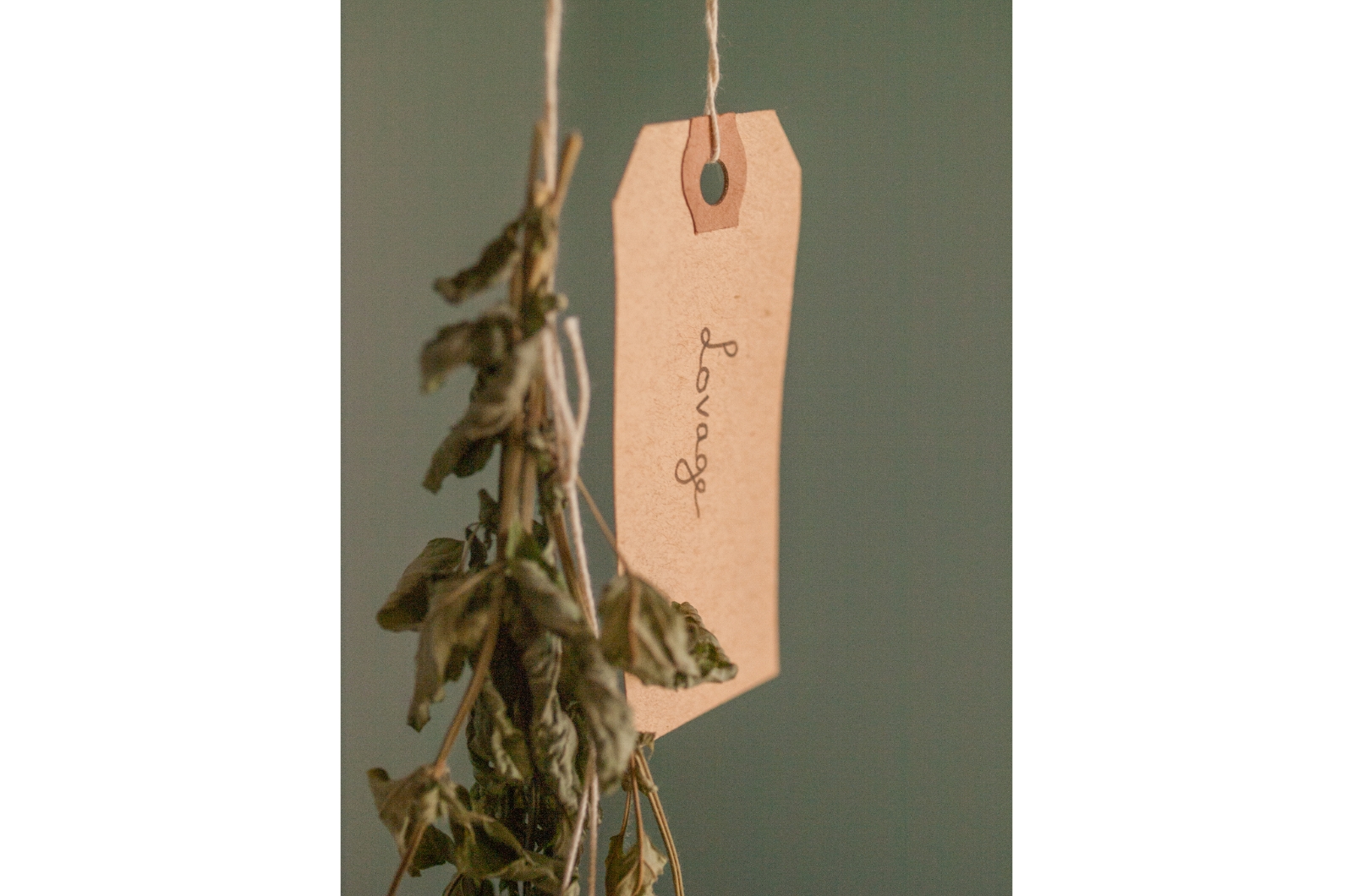Lovage is a tough herb that comes from the Mediterranean region. It belongs to the same family as parsley, parsnips, and carrots, which we can notice by the similarity of their leaves.
It was a popular herb a long time ago, but today hardly anyone has heard of it. It has medicinal and culinary properties. And people even used it to make love potions. In fact, they called it love ache, but the pronunciation changed a bit throughout the years.
Here’s some more info about this unique herb and some tips for growing it!
Let’s get started!
About Lovage
Lovage is a resilient plant that you can find on the list of drought-tolerant herbs. Its tripinnate leaves resemble those of parsley and celery, but there’s a twist to this plant.
It can get up to 6 feet tall as the season wears on. And to make matters even better, this herb is a perennial. That means no tedious planting year after year.
The plant emerges in spring and adorns your garden with yellow flowers in mid-to-late summer. These will attract various pollinators and other beneficial insects to your yard.
What I love about lovage is the same thing I love about parsley, carrots, and other members of this family; you can eat them whole; leaves, roots, and all!
Its taste is a mixture of celery and parsley, and you can use it in all the dishes that call for these spices.
Growing Lovage
This herb is quite simple to grow. Plant it in a rich and loamy soil with good drainage. I also like to add some compost before planting.
Ensure it gets full or partial sun throughout the day, keep it moist, and add mulch to reduce its watering needs.
Feed this herb with a compost tea a couple of times throughout the growing season, and that’s it.
And don’t forget to check your herb companion planting chart; lovage makes an excellent growing buddy to almost any plant in your garden.
As for me, I grow it near my root veggies!
From Seeds
Lovage takes about 1-3 weeks to germinate, if you do everything right. The first thing to bear in mind is to keep it at temperatures between 68-77°F. You can soak the seeds overnight before planting to speed up sprouting.
Now to the planting!
Step 1. Fill a small container or nursery tray with a seed-starting mix and scatter the lovage seeds on top. Cover them with a thin layer of the same potting mixture.
Step 2. Water the mix and wrap the pot or tray in cling film or a humidity dome. This will ensure the seeds stay moist until they germinate.
Step 3. Once the seeds sprout, you can remove the foil.
Step 4. Wait until the seedlings are at least 2 inches tall and have a set of true leaves before transplanting them to a larger container or your garden. Don’t forget to harden them off before taking them outdoors.
P.S. Start the lovage seeds 10-12 weeks before your last spring frost so that you can move them outdoors as soon as the weather warms up.
Where To Buy Seeds
If you can’t find lovage seeds at your local garden center, you can always look online. There are many options on Amazon, Burpee, West Coast Seeds, etc.
From Transplants
I wouldn’t recommend beginners to grow their first batch of lovage from seeds. It can be tedious and you may not get the results you want.
Instead, look for starter plants at your local nursery and transplant them into your garden. One or two young plants are more than enough to give you the harvest of your dreams.
Here’s how to do it!
Step 1. Take your lovage plants outdoors once all danger of frost has passed and nighttime temperatures are above 40°F. Harden the seedlings off before moving them to their permanent location.
Step 2. Dig deep holes to accommodate the entire root system of your lovage. Amend them with compost to give your plants an extra boost.
Step 3. Space your lovage plants 2 ft apart with 2 ft between rows (if you’re going to plant that many).
Step 4. Irrigate them deeply and frequently until they establish (start growing again).
By Division
If you already have lovage in your garden, but want more, you can divide your existing plants. Do this in spring so that your new plant can start developing at once.
Step 1. Drive a shovel into the middle of your lovage. Make sure to go in deep to get a decent amount of roots.
Step 2. Uproot one part of your lovage and plant it in its new location.
Step 3. Water it thoroughly until it establishes.
P.S. If you’re dividing lovage away from your property (say, at your friend’s), place it in a bag, bucket, or a container. Try to keep as much of the original soil as possible. Water it before taking it home with you.
Common Issues You May Encounter
The good news is that diseases and fungi rarely attack lovage. Pests are also not a big fan of its foliage.
However, leaf miners are a common nuisance. They will nibble on the delicious leaves, leaving burrowing lines behind.
Luckily, the damage they do is only cosmetic. Remove the infected foliage to get rid of the larvae, and that’s it!
Harvesting Lovage
You can harvest the leaves and stems of your lovage throughout the year. They taste best when young and crisp, before the flowering season.
If you want to harvest this herb in large batches, make sure to cut the stems as close to the base of the plant as possible.
You can also allow this herb to blossom and go to seed. Gather the dry and brown flower heads in late summer. Put them all in a paper bag and rub it between your hands to release the seeds.
Finally, you can harvest lovage roots once your plant is 2-3 years of age. Dig up a portion of the roots before the plant starts blooming.
Clean the dirt off and cut the roots into smaller pieces. Make sure to peel them before usage.
Preservation And Storage
Lovage is best used fresh, but there’s no reason why you shouldn’t enjoy its taste all year long. There are many ways of preserving and storing it.
You can extend the shelf life of lovage foliage and stems by keeping them in the fridge in a plastic bag. Of course, this will only give this herb a few extra days.
Another thing you can do is dry the leaves. Hang them in a warm and dark location. The faster they dry, the more flavor they retain. So, don’t keep your lovage in a humid and cold spot if you want it to taste its best.
Or you can use a dehydrator!
Finally, you can blanch and freeze the lovage leaves and stems. Chop the herb into tiny pieces, place them in an ice tray, add water, and store them in your freezer.

